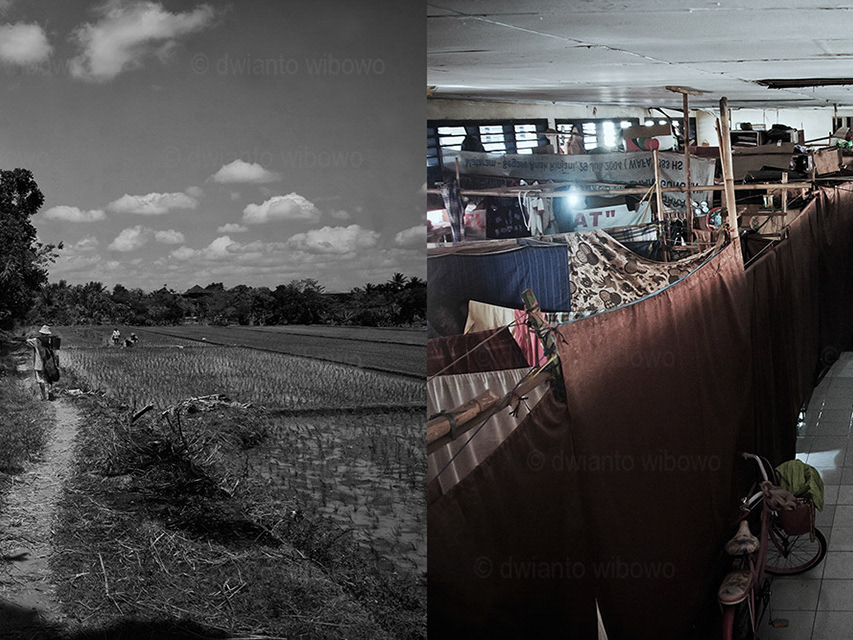The silhouette of Sangiang Island seen from the port of Paku, Anyer, Banten, 31 October 2022.
Mothers and children visit their families on Sangiang Island, Banten, 19 December 2022. ©Teresia May
Excavators in the building concession area of PT Pondok Kalimaya Putih in the Tembuyung area, Sangiang Island, November 5, 2022.
Rows of houses on 4 hectare of waqf land on Sangiang Island. Since the arrival of tourism on the island, many residents have built small stalls and lodging houses on waqf land in front of the entrance to the Legon Waru pier. The increasingly crowded settlements are not just the effect of tourism, but because of wild pests, squirrels and cobras since 2003 as well as efforts to eviction by the company. He forced residents to gather to form one village, while the elders remained in their respective plantations.
Company rejection poster in an abandoned house in Legon Waru village, 15 February 2023. ©Teresia May
Zaenab (60) in a photo shoot at her house on Sangiang Island, Banten, November 2 2022. Zaenab has grown up on the island since the 60's. ©Teresia May
A number of houses were demolished by PKP henchmen in Legon Waru village, August 17th, 2023.
A baby wild boar crossed a garden that had been abandoned by residents. February 16th, 2023.
Turiah (59) was photographed in the yard of her house on Sangiang Island, Banten, November 2 2022. ©Teresia May
Andesite rocks are scattered under cliffs on Sepanjang beach, June 30, 2023. Based on information from residents, several rock cliffs have been bombed and dredged by PKP.
Dead coral reefs are scattered on Tanjung Bajo beach due to dredging carried out by PKP, July 1, 2023.
Engkos Kosasih (64) after collecting atum on the Sepanjang beach, Sangiang Island, Banten, November 2, 2022. Apart from gardening, island residents collect "atum" (plastic waste) that is scattered on the beach, especially during the west monsoon season. In addition to protecting inherited land, the islanders got a little economic value after their food independence was destroyed by swine pests in 2003.
A cobra cub died in the yard of a resident's house on Legon Waru village, November 4 2022.
Rahmat (65) looks for crabs in the mangrove forest, Tembuyung area, June 26, 2023.
Residents walk home after a meeting at the Muhajirin mosque in Legon Waru village, Thursday evening, November 3 2022.
Engkos family back to their house in Sepanjang beach after Shalat at the Muhajirin mosque in Legon Waru village, Thursday evening, March 31, 2023.
Mustopa (20) thinks to himself at the Legon Waru jetty. “I am confused, why do many residents choose to leave the island. My aunty who had left also kept asking me to come out. I'm annoyed.. While my father's origins are from this island, and he is also buried here,” he grumbled. March 23, 2023.
The landscape of the Serang area was photographed from a local boat on its way to Anyer, November 5, 2022.
Siti Sofianti (17) is pensive on the roof of the boat as she departs from the Legon Waru pier, November 5, 2022. "We are birth until old age live from this island, please don’t forget that” she said. Currently, Sofi is still in grade 3 of high school and lives in Anyer with her brother.
The Green Garden LCT (Landing Craft Tank) ship crossed the Sunda Strait, Anyar, Banten, November 5 2022. When heading ashore, the captain of the ship informed us that this barge had made 3 trips to Sangiang Island today carrying heavy equipment. Islanders witnessed massive PT.PKP development activities which were allegedly due to the HGB deadline ending in 2024.


